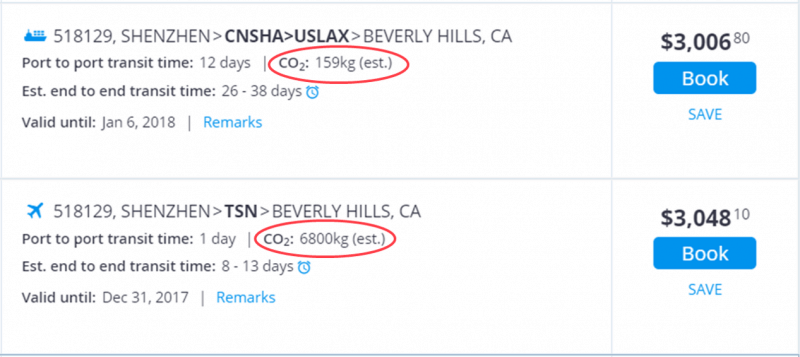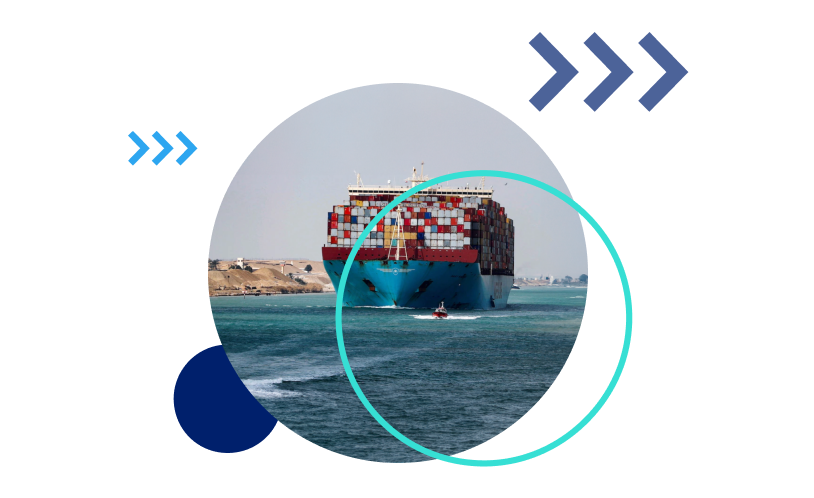Two years ago this month, at COP21, the world committed to capping the global rise in temperature (the Paris Agreement). This became a hot topic recently when President Trump announced he was pulling the US out. Now that Syria’s recently signed, that leaves the world’s second largest CO2 emitting country alone outside the agreement.
Well, not completely alone. Two major emitting industries, international freight, and aviation, had been exempted from COP21 on a technicality. And that situation might have suited some of the industry’s old brigade, who see green freight as a distraction.
But a lot has changed over the past two years. With more technology, information, and tools at their disposal, it’s become a lot clearer to industry players how they can make a difference without breaking the bank.
Carbon Freight Emission Statistics
Here’s why it matters:
The freight industry accounts for about 10% of all emissions.
Freight makes up 16% of US corporate greenhouse gas emissions.
Ocean shipping accounts for 2.2% of global carbon emissions. The International Maritime Organization (IMO) projects emissions to increase 50%-250% by 2050.
Air freight emits nearly 50 times more emissions per kilometer than ocean transportation.
Harnessing New Technologies
Carbon capture technology that “eats emissions” may still sound like sci-fi, but so too, even relatively recently, did autonomous trucks, hydrogen-fueled trucks, and delivery drones.
Major truck manufacturers have committed to building more fuel-efficient (including electric) aerodynamically designed trucks, with Tesla leading the charge. But consider how much recently adapted technology already improves truck shipment efficiency, saving on fuel and emissions. Technology like on-demand delivery platforms, live tracking, telematics, predictive analytics, and hybrid fleet systems.
Amongst ocean carriers, CMA CGM is a trailblazer, aiming to slash its carbon footprint by 30% over ten years. Recent initiatives include:
Modernizing their fleet with efficient ultra-large vessels.
Investigating use of alternative fuels, equipping nine of their largest ships for natural gas.
Purchasing 50,000 bamboo “eco-containers”, and 25,000 light steel containers to reduce deadweight tonnage and therefore fuel consumption.
Air cargo carrier, American Airlines Cargo can match that, having cut millions of pounds of CO2 emissions since 2005. Many of their initiatives are similar to CMA CGM, and include:
Modernising their fleet with 777-300 aircraft, which burn 30% less fuel than older 747s.
Working with biofuel companies for ways to reduce long-haul fuel consumption.
Purchasing 5,000 reusable lightweight composite cargo containers, saving over 1 million gallons annually.
Not that green technology has to be new. UPS, for instance, is piloting courier delivery by bicycle.
Optimizing Process Efficiency
Green freight doesn’t isn’t only about technology. There are plenty better ways to get things done and reduce emissions in the process.
Jason Mathers from the Environmental Defence Fund (EDF), is the author of the Green Freight Handbook. In a recent article, he listed some great examples of companies successfully applying EDF’s Five Principles for Greener Freight:
- Maximize cube utilization (Home Depot now use 4,000 fewer trucks).
- Favor ocean and rail modes (Happy Family switched modes for 30% of some domestic transportation).
- Insist that carriers use more fuel-efficient equipment (General Mills cut its shipping emissions by 8% in part by doing this).
- Optimize logistics network (Walmart has pledged to double fuel efficiency)
- Collaborate internally and with suppliers, customers, vendors, even competitors to reduce truck trips and decrease inventory (Kimberly-Clark and Colgate’s CVS pilot).
Good Corporate Citizenship
Reducing emissions may reduce costs and improve finances, but for American Airlines and CMA CGM green freight is also about being good corporate citizens.
Doing the right thing has seen over 70 percent of the 500 largest US-traded companies now issue Corporate Sustainability Reports. It has also seen many freight forwarders sign up to programs like SmartWay (U.S.) and Green Freight Europe.
Good corporate citizenship can mean influencing other companies, such as Walmart’s Project Gigaton, which requires commitments from its suppliers.
It can also mean advocating on behalf of the industry. Like Kuehne + Nagel and CMA CGM, who are both members of the Clean Cargo Working Group, an organization that aims to reduce the environmental impact of global transportation and logistics.
Advocacy can also lead to action. Aviation, the other industry exempted by the Paris Agreement, recently agreed to an emissions-reduction scheme.
Sometimes, too, good corporate citizenship extends to activism. Many large maritime companies, including Maersk, have just called on heads of state to force carbon emission cuts on their industry.
Empowering New Tools For New Times
There is no shortage of programs and action plans for industry players to plug into. Leading initiatives include:
- SmartWay (US)
- Green Freight Europe
- Sustainable Fuel Buyers’ Principles (BSR)
- Green Freight Handbook (EDF)
- Global Green Freight Action Plan.
Then, there are new empowerment schemes, like the GoodShipping Program, whereby cargo owners select the share of their ocean freight volume they will sponsor substitution of sustainable marine biofuel.
Green freight initiatives fit with Freightos’ commitment to making the freight industry more transparent and efficient.
On the second anniversary of the Paris Agreement, it’s fitting that from now on every shipping service offered on the Freightos Marketplace will now include a transparent CO2 footprint estimation, to help customers optimize route and mode selection with live international CO2 footprint calculations.

Freightos Marketplace quotes now include CO2 emissions estimates
In the last two years, green freight has gained significant momentum. With new tools to support them, carriers, forwarders, and shippers are increasingly harnessing new technology, optimizing process and advocating for green freight. From being the outsiders of the Paris Agreement, players in the freight industry are now set on making a difference.
Get instant international freight rates and go for the
quickest, cheapest, or GREENEST.



